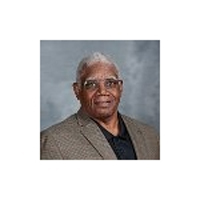Remembrance of IBM DB2 Events of the 1980’s which Led to the Creation of IDUG
This article is a summary of the series of IBM DB2 marketing events during the 1980’s that created the business opportunity, which lead to the creation of the International DB2 Users Group (IDUG). The opinions expressed in this article are solely those of the author based on his IBM involvement with DB2 and IDUG.
It is dedicated to the many early DB2 customers such as Gabrielle Workowski, Roger Miller, Joyce Bishoff and Trina LaRue that played a significant role in building the solid DB2 customer foundation. Successful DB2 customer implementations lead to the formation of numerous local DB2 users groups. The feedback from local DB2 Users Group provided much needed product feedback information to the IBM LAB Development team members headed by Marilyn Bohl, Don Haderle, Curt Cotner, Jim Benjamin and the IBM Marketing team headed by M. Bernard Puckett and Janet Perna. The Dallas DB2 Systems Support Center headed by Jim McQuirter also benefited from local DB2 Users Groups to leverage their limited resource support assets and fine tune the education requirements delivered to customers by the IBM NY Education Center headed by John Burns.
Then, there were those third party DB2 vendors who filled in the deficiencies in the DB2 product line with high quality DB2 applications and utilities. Some companies bet their whole future on DB2. Platinum technology Inc. led by Flip “Andrew Filipowski” was one of those companies. They initially called themselves, “Platinum technology the DB2 Company”. Many of the 300 third party software companies that showed up for the 1986 DB2 technical sessions in Dallas led by Jim McQuirter and his Dallas DB2 Technical Support staff, played an important role in the growth of DB2. Now let’s take a look at the series of events that created the business environment which led to the creation of IDUG in 1988.
Topics
- My Journey to Relational Technology
- Codd & Date Consulting
- IBM DB2 Relational Systems Education
- Local DB2 Users Groups
- Local DB2 Database Specialist
- IBM DB2 Support
- On the Yellow Brick Road to Creating IDUG
I will first start with my journey to relational technology because this journey allowed the creation of the relationships, trust, and informal candid unfiltered communications between early DB2 customers, IBM development, marketing, and technical support.
My Journey to Relational Technology
My relational journey began in the late 1970’s by reading everything I could in regard to Relational technology and Micro Coded Assisted technology. I read all the results of the Codd, Date, and Michael Stonebreaker debates at the University of California, Berkley. From my perspective, it was just a question of which path IBM would take in the development of their new relational database management system. Since I was an IMS database specialist in the IBM Philadelphia Finance and Insurance (F& I) branch, I wanted to stay abreast of the latest database technology. My branch manager, M. Bernard Puckett, hired me in 1978, as the first database specialist in Philadelphia. Bernard mentioned software was the key to the future growth of IBM. As I sat there during my initial interview, I noticed Bernard was wearing brown loafer shoes with tassels and he was not wearing a buttoned down white shirt. Back in 1978, all IBM Branch managers wore wing tip black shoes and a buttoned down white shirt. I said to myself, he is going a long way up the IBM management chain, or he won’t be here in six months. Bernard soared quickly to Senior Vice President by the early 1980’s. He was one of the first IBM executives that I had met, who had a focus on software specialization and database technology. Generally speaking, IBM management was still in the era of hardware centric thinking. It would take more than several decades before IBM would focus on software. I decided to do everything in my power to make Bernard’s F&I branch office successful in the sale and implementation of database software and related products.
As I had predicted, later in 1978 Bernard was promoted to the position of IBM Regional Marketing manager in Minnesota, then regional manager. By 1980 Bernard was a VP in White Plains, NY and would soon be responsible for the announcement of IBM’s new relational DB2 mainframe product. As the old saying goes, he soared to the top quickly, to become an IBM Senior Vice President.
In 1980, I was promoted to the position of competitive database person for all divisions of IBM in the eastern half of the US. Two years later my scope of responsibility was expanded to the entire country after my counterpart Herb Swain, who covered the western half of the country was promoted. Upon accepting the competitive database position in 1980, I immediately renewed my relationship with Bernard and my commitment to helping him become successful with marketing DB2. From that point on, about every six months we talked about DB2 database marketing strategy and related issues.
My objective was simple, be aggressive, bold, tell the truth and always be correct. The network of database specialists throughout the country, were a vital component of my process. I communicated everything I learned of major significance about IMS and relational competitive database marketing strategy to Bernard. One of the first people I met after accepting the competitive database position in1980 was Sharon Weinberg. Sharon had worked on the development of relational technology at the IBM Lab and she was the wife of Dr. Ted Codd.
Codd & Date Consulting
Sharon Weinberg, Bill Graber from IBM Canada and I made joint customer competitive calls and presentations to potential DB2 customers. Shortly after working with Sharon, I met Chris Date, Dr. Ted Codd and the whole Codd & Date Consulting team. As we all know, it was Dr. Codd who invented the Relational Theory and Chris Date wrote most of the early books on relational technology and taught classes that enabled many early DB2 customers, how to correctly design and develop relational systems.
Dr. Ted Codd, IBM Fellow, retired from IBM in the early 1980’s. During the early 1980’s there was tremendous hype in the press regarding the benefits of relational systems. Shortly after retiring from IBM, Ted developed his, “12 Rules of Relational Systems”.
Many vendors were falsely claiming their products were relational because there were no industry accepted standards of the definition of a relational system. This was resolved when Dr. Ted Codd developed his 12 rules for relational systems. Dr. Codd was hired as an independent consultant in 1984 to conduct an independent evaluation of three products for relational completeness, DB2, IDMS and Datacom based on his newly developed 12 rules for relational systems. Dr. Codd presented the results of his evaluation to IBM at a meeting hosted by Charlie Bontempo at System Research Institute (SRI) in NY. Dr. Codd asked Bill Reedy from IBM if it was okay to publish the results of evaluation, which Bill said” I am glad he wants to publish the results because we wouldn’t”. Codd & Date Consulting published the results in a 1984 Computerworld article. Even though some DB2 development people had a problem with DB2’s rating. This article made a clear distinction between the relational completeness of DB2 versus other products that were claiming to be relational. In my opinion, this article had a devastating negative impact on Cullinet Software marketing and IDMS.
As early DB2 customers successfully implemented DB2 in production systems, Codd and Date conducted DB2 events called, “DB2 Production Profiles”. Their goal was to highlight DB2 customers who had successfully developed DB2 transactional processing systems in a production environment. This was significant because many IBM people were initially only promoting DB2 for query usage. How did these early customers learn how to design and implement DB2 relational systems correctly? This was no easy task, because relational concepts differed vastly from hierarchical system such as Total, IMS, and network systems such as IDMS or inverted database management systems such as Datacom and Adabas.
IBM DB2 Relational Systems Education
Everything started with the IBM Santa Theresa Development Lab. Marilyn Bohl and Jim Benjamin were the development managers and Jim Gideon was the guy who was pulling all the product manager strings to negotiate the sign-offs from marketing and the service group, to get the product out the door. Jim McQuirter was the magician pulling rabbit after rabbit out of hats to enable the customers and field specialist with DB2 skills transfer.
IBM Lab personnel trained the IBM Customer Support personnel and the DB2 Dallas Systems Center personnel. The Santa Teresa lab personnel were the true experts. The total list of lab experts is too long for this document. Here are the names of a few of the leaders, Marilyn Bohl, Don Haderle, Curt Cotner, John Campbell, Bob Ojala, Akira Shibamiya (Mr. Optimizer), George Zagelow (Mr. DRDA), Jnan Dash, and Nagraj Alur, who led the effort to keep pointers out of DB2 and use data-based RI instead.
The IBM Lab personnel and the IBM Dallas Systems Center personnel headed by Jim McQuirter, trained the IBM NY Education Center personnel, the DB2 regional teams and local branch DB2 database specialist. All of the IBM field support personnel had to be thoroughly trained on all aspects of DB2 design and implementation.
John Burns the NY Education Center Manager and his excellent team of DB2 instructors led the formal classroom training for DB2. John worked alongside Jim McQuirter and Jim Benjamin to build a comprehensive DB2 curriculum. John’s instructors built the customer classes that were the key to training thousands of DB2 customers around the world. After the first wave of DB2 education was taught, the DB2 education responsibility was passed to the Field Systems Centers. They played a key role in providing local DB2 education classes to customers. You may remember folks in the Field Systems Centers like Dick Burke in Philadelphia, Horacio Terrizzano in NY, Willie Favero in TX, were instrumental in providing DB2 field expertise.
Providing massive amounts of high quality DB2 education with very limited resources was a difficult challenge to meet. I received a call from Jim McQuirter one day when he ran into an early education funding issues as he tried to develop the first DB2 education classes. Someone in IBM decided not to approve his DB2 education budget unless he told them how many DB2 licenses would be sold in the first year. Needless to say, it was impossible for Jim to know the answer. M. Bernard Puckett Sr. VP was made aware of Jim’s issue. The next day, Jim was notified by M. Bernard Puckett that he could spend whatever was necessary to develop the DB2 education. This was a good example of trust that existed between IBM upper management and the wild ducks who believed in this new IBM relational database management system called DB2.
People like Prem Mehra, Lee Segmund and Larry Clark were pillars of Jim’s team, but Prem Mehra was the one who emerged as the technical face of DB2 at IBM conferences like GUIDE and SHARE along with a few of the Dallas Systems Center folks like Lee Siegmund and Larry Clark.
In the early1980’s the field DB2 database specialist sold DB2 and technically supported all aspects of DB2 implementation. Most of the DB2 database specialists were also the IMS database specialists and technically supported a large base of IMS customers developing complex IMS database applications. The database specialist had to sell and support IMS and the new DB2 relational system. This put most field database specialist in the precarious position of total burnout. In addition, the database specialist usually supported the newly formed local DB2 users groups. Local DB2 Users Group provided the opportunity for the over worked DB2 database specialist to leverage their knowledge and support.
Local DB2 Users Groups
As customers started to develop DB2 applications, many customers had a strong desire to exchange technical information with other local DB2 customers. Just to name a few early DB2 customers who formed local DB2 Users Groups. Joyce Bishoff from ICI Americas in Wilmington Delaware formed the Delaware Valley DB2 Users Group in Philadelphia. The late Gabrielle Wiorkowski from Texas Instruments formed the Dallas DB2 Users Group. Many local DB2 Users Groups were formed throughout the country, with or without IBM local support. These local DB2 Users Groups provided invaluable product feedback information to the IBM Santa Teresa Lab development teams. The third party vendors such as BMC Software, Compuware Corporation, Candle Corp. Information Builders, Relational Architects, Platinum Technology, Cognos, CA Associates, Responsive Systems Company, On-line Software, and numerous others were extremely supportive of local DB2 Users Groups. Eventually, IBM realized local DB2 Users Groups played an extremely important role in the successful DB2 implementation, growth and DB2 software sales. Local DB2 Users Group meetings also leveraged the scarce IBM DB2 technical database Santa Teresa Lab and Dallas Support Center resources.
Local DB2 Database Specialist
I just want to mention the names of a few of these great DB2 database specialists who have retired from IBM. There are many more unsung contributors whose names I cannot remember and are too numerous to mention, no offense intended.
Terry Fasolt-Harrisburg, Jim Gideon-Atlanta, Dave Moss-Washington DC, Lisa Johnson- Harrisburg, Dave Grachek-Reading PA, Carolyn Dow-Chicago, Tom Walstad-Minnesota, Jan Worley-St Louis, Jack Wilkie-Greensboro, Judson Howard-Los Angles, Paul Blacksin-NY, John Fennelli-NY, Chuck Hoover-Detroit, Jim Dreano-Pittsburgh, Dr. Fenn King-NY, Don Odom-Houston, plus the Philadelphia group consisting of Dick Burke, Jack McGrenra, Norm Naylor, Sonja Ang, Don Landau, Hazel Weathers.
Several of these early DB2 database specialists are still working today:
Chris Tsounis-NY, Charles Lewis-Richmond, Robert Catterall-Atlanta, Emi Kawasaki-Los Angles, Warren Hawkins-Houston.
If I did not know the answer to Bernard’s detailed technical questions. Then, I would ask the same question to my brilliant network of branch DB2 database specialist, to get a consensus opinion answer, which was always the best answer or solution.
In my opinion the DB2 database specialist were the people that made DB2 customer implementations successful, with tremendous unlimited support from the IBM Santa Teresa Lab, Dallas Support Center and the IBM Education Centers.
IBM DB2 Support
Many people in IBM viewed this new relational technology as risky to the established IMS database management system. But, the IBM relational believers were looking ahead at the future of database technology, just as T. J. Watson had looked ahead in the early 1960’s at the 360 line of IBM hardware.
You can view the IBM 1980’s support for the new relational technology like a three tier hierarchal structure. The IBM DB2 Development Lab developed the DB2 product and trained the IBM DB2 Dallas technical support team. The technical support team trained the DB2 regional and local database specialist in the field on all aspects of relational technology, which they transferred to the DB2 customers. One of these early DB2 customers, Roger Miller later joined the IBM development and technical support staffs and made significant contributions to the success of DB2.
DB2 specialist worked as team across IBM branch offices, IBM regions in the US and throughout the world to get successful DB2 customer implementations. They played the game like the Boston Celtics played basketball during the Bill Russell era. They helped each other out to get the easy open shot.
The DB2 specialist provided marketing and technical support for each other, by leveraging their skills and knowledge. They unselfishly, contributed to the success of some other DB2 database specialist in another branch office or region and in most situations received little if any monetary or recognition awards.
The DB2 database specialist received strong support from the IBM DB2 Development Lab team of Marilyn Bohl, John Campbell, Jim Gideon, Jim Benjamin, Don Haderle, the Dallas Support Center lead by Jim McQuirter and IBM Marketing lead by M. Bernard Puckett. This strong support eventually led to the creation of separate IMS and DB2 branch office database specialist or multiple DB2 database specialists in the larger IBM branch offices. The DB2 specialist also received strong support from their spiritual relational leader Charlie Bontempo from the IBM Systems Research Institute.
On the Yellow Brick Road to Creating IDUG
Some solutions were suggested to Bernard based on what the IMS development people didn’t do. IMS never opened the architecture of IMS to third party application developers. One could argue the functional attributes of the various competitive database management systems. But, if the customer end users had selected a third party application that was not supported by your database management system such as IMS, you were going to lose the database management decision. IDMS had 30 applications that only ran with IDMS. It was suggested to Bernard that the architecture of DB2 should be open to 300 DB2 third party vendors.
The next year the Dallas Support Center and the IBM Development Lab led by Norris van den Berg hosted an event in Dallas showing 300 third party vendors how to develop efficient applications that interfaced with the DB2 database management system.
About a year after IBM showed third party vendors how to interface their applications with DB2. Third party vendors began to have DB2 applications available for customers to purchase. Computerworld ran an article which said, there were no third party applications for DB2. The late Bob Yelovich allowed a DB2 application survey questionnaire to be handed out during a CICS specialist update in Philadelphia. The questionnaire asked CICS customers what type of DB2 applications they were in need of. The questionnaire results showed a high demand for numerous types of DB2 third party application software solutions. The questionnaire results were summarized, presented to Bernard and the president of the IBM advanced systems division.
It was suggested to Bernard that we run DB2 Vendor Fairs to highlight the numerous third party DB2 application solutions available to customers. The next year IBM funded five prototype DB2 Vendor events across Pennsylvania and New Jersey, which I conducted. The events were extremely successful with standing room only, in the multiple vendor breakout rooms. At the third event held in Philadelphia. Andrew (Flip) Filipowski the president of Platinum Technology indicated he wanted to start a new organization, called the International DB2 Users Group (IDUG). Recently, I asked Flip why he started the International DB2 Users Group (IDUG) and here was his answer.
“To have Platinum Technology exert a bigger influence on the DB2 community then it could with Share or Guide. IBM software marketing was not treating DB2 as the significant force that it was, but rather as just another product almost deferring to IMS, which they were afraid would suffer a quicker demise.”
“Not only did we as Platinum need the ability to influence the user community we needed to out maneuver some of the larger software providers (BMC & Compuware among many) that were developing substantial offerings in support of DB2 and other relational database products. To accomplish this I asked not only IBM but KPMG to sponsor IDUG and Dick Reck who was the head of the KPMG technology practice were critical to accomplishing what at times appeared impossible. As part of the charter of IDUG, Platinum along with the two sponsors of KPMG and IBM had permanent rights to sitting and chairing the IDUG board as well as permanent priority in keynote slots, premium booth space and first choice of location. I doubt Platinum would have been able to grow within a decade into a billion dollar publically held corporation if we had not pulled this marketing gem off. Everything else we did, was with fairness as our guide, as we allowed all other vendors to participate, contribute at the levels they chose and acquire competitive booth space on the floor of the conference just never quite as well placed or controlled as Platinum was. Frankly, I must also admit that the first iteration of the board was primarily composed of users of Platinum products. I will forever be grateful to Nate and Dick for supporting IDUG in the way they did as their single minded approach to making DB2 successful in the Enterprise, was always their guiding light. Also I do believe that the very existence of IDUG was a giant reason that DB2 prospered and was adopted as quickly as it was. Nate had a huge hand in that result and to this day I believe he was never quite appropriately recognized for this tremendous accomplishment.”
Flip indicated he needed IBM representation and asked me if I was interested in participating, which I replied, yes. Bernard also thought it was a good idea and I became a founding member of the IDUG Board of Directors representing IBM. We began to plan for the first IDUG conference in 1988, which was the most critical conference. The IDUG Board of Directors and committees were formed. As marketing began to promote the critical first IDUG conference in 1988, Platinum Technology and IBM lead the way, but it was an IBMer by the name of Bud Hartley who was the difference maker. He maintained a distribution list of over 1,300 people that were interested in hearing more about DB2. In addition to the regular hints, tips, and news about the success of DB2 in the marketplace, he sent the DB2 conference marketing information to the list to generate more interest. Customer attendance at the 1988 first IDUG conference in Chicago far exceeded expectations and the rest is history.
In 1990, I took an IBM early retirement package to conduct local DB2 Vendor fairs throughout the country with various local DB2 regional users groups (RUGS). Don Haderle and Janet Perna from IBM were frequent keynote speakers. I received tremendous support from all DB2 third party vendors, but Platinum provided me with exceptional support by using their customer marketing information system, called Rhino.









0 Comments